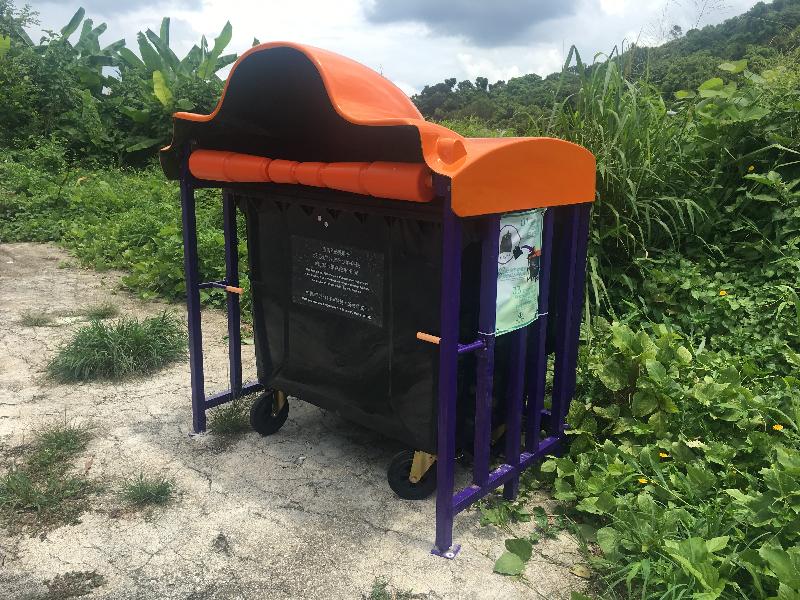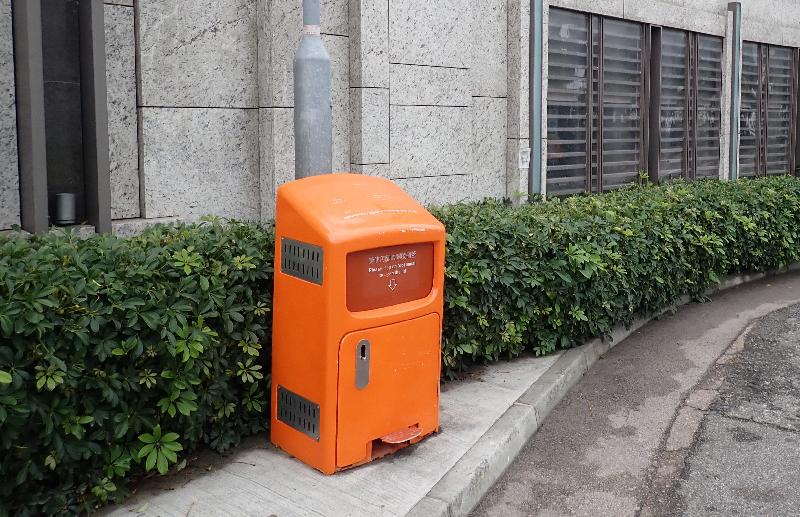Following is the speech by the Secretary for Financial Services and the Treasury, Mr Christopher Hui, at the Business Sustainability Indices Recognition Ceremony 2021 organised by the Centre for Business Sustainability, CUHK Business School today (June 24).
Good afternoon, ladies and gentlemen.
Thank you Professor Tuan (Vice-Chancellor of the Chinese University of Hong Kong (CUHK), Professor Rocky Tuan), Professor Lin Zhou (Dean of the Faculty of Business Administration of CUHK), Professor C Y Chiu (Dean of the Faculty of Social Science of CUHK) and Director Carlos Lo (Director of the Centre for Business Sustainability of CUHK) for inviting me to join this ceremony. I am very pleased to see that, building on the success of the event in 2019, the Centre for Business Sustainability has collaborated with the Consumer Council, the School of Hotel and Tourism Management of CUHK and also the SME Sustainability Society to recognise outstanding performers in corporate social responsibility (CSR).
In today’s ceremony, awards will be presented to companies in Greater China, the Greater Bay Area and Hong Kong, in recognition of their sustainability achievements for inclusion into the Business Sustainability Indices. Also, for companies large or small, sustainability is now equally important. I am also glad to see that there is a dedicated category of SMEs to be recognised in today’s ceremony.
Speaking of sustainability and CSR, going green is definitely the way to go. As we seek to revive our economy from the negative impact of COVID, there is now a global consensus that greening our economy should be our top priority. To accommodate this trend, green financing and investment activities have picked up significantly in international markets. Globally the green debt issuance amount has reached US$290 billion in 2020, achieving an average growth rate of 38 per cent in the past five years. The leading market is now Europe, followed by Asia-Pacific and North America.
Green finance is such an important tool, since it provides the necessary capital for us to invest and achieve a goal of common good, and the goal can be quantified as carbon neutrality, meaning we shall leave zero net emission in our environment as we pursue economic development. Our own country, in a leading and responsible manner, has already committed to lowering aggregate emission starting from 2030, and achieving carbon neutrality by 2060. To meet this ambitious goal, it is estimated that the annual funding requirement will be over RMB3.5 trillion, equivalent to around 3 per cent of the country’s GDP, hence an active green finance market is much needed. As to Hong Kong, since we are much less industrial and mostly rely on services as an economic drive, the Chief Executive has also in her latest Policy Address committed that we will be achieving carbon neutrality by 2050.
Hong Kong, being an international financial centre well known for our financing capability, has seen remarkable growth in recent years on green finance, thanks to the collective efforts of the private sector and the Government. In 2020, US$12 billion of green debt was arranged and issued in Hong Kong, of which US$1.3 billion were green loans. Cumulative issuance of green debts also reached over US$38 billion by the end of 2020. Like our IPO market which has financed many Mainland companies, Mainland issuers are the driving force in our green finance market as they accounted for 60 per cent of issuance in 2020. In terms of issuer type, corporate is the most active one with the real estate sector contributing 34 per cent of the issuance amount.
Financing aside, we also care a lot about how the capital is deployed. Compared to 2019 with “buildings” as the most popular type of usage, having over 60 per cent of shares, use of green proceeds in 2020 is much more diversified with “transport and waste management” also taking significant shares. It is an encouraging sign as we observe wider and broader use of proceeds raised by green debts.
Another positive sign of development is that all the green bonds and loans arranged in Hong Kong in 2020 were subject to second party opinion (SPO), providing stronger credibility that proceeds raised would indeed go to green projects. This helps to address the potential risk of “greenwashing”, the potential problem of proceeds going into projects that are essentially “brown” but disguised as “green”, and it would reinforce trust in the entire ecosystem of green finance.
As green finance is a relatively new concept, the Government fully recognises our role in taking the lead to develop the market. Earlier in January this year, the Government completed its issuance of US$2.5 billion of green bonds. The offering comprises three tranches of US$1 billion five-year, US$1 billion 10-year and US$500 million 30-year green bonds, which will build a comprehensive benchmark curve for potential issuers in Hong Kong and the region. The 30-year tranche is also the first 30-year green bond to be issued by an Asian government, and the longest tenor issued so far by the Hong Kong Government. Demand from international investors for our green bonds was strong, with the 30-year tranche attracting orders more than seven times its issuance size. Building on the success of this issuance and our inaugural issuance back in 2019, the Financial Secretary announced in the latest Budget that the Government will further issue about HK$180 billion of green bonds in the coming five years, depending on market situations. Also, for the very first time, we will issue a retail tranche such that members of the public can also participate.
Enough for numbers and data aside, you may also be interested in how the Government spends and invests the proceeds raised through green bonds, so that we could improve the environment and promote a low-carbon economy. Indeed, we have issued a green bond report in 2020 detailing how capital has been deployed in our green public projects, covering the areas of waste management and resource recovery, green buildings, water and wastewater management, and energy efficiency and conservation. One such example is called O·PARK1 located at Siu Ho Wan of North Lantau, and it is the first organic resources recovery centre in Hong Kong that turns food waste into biogas for electricity generation. It is capable of handling 200 tonnes of food waste per day, and when running in full capacity, annually it can generate electricity equivalent to the power consumption of 3,000 households.
Another example is the new Inland Revenue Tower in Kai Tak, which is scheduled for completion in 2022. It adopts many energy-efficient and renewable energy technologies, such as a district cooling system and a rainwater harvesting system. The Hong Kong Green Building Council has awarded a provisional certification at the Gold rating of the BEAM Plus New Buildings scheme to the project, for its achievement of about 30 per cent reduction in carbon emission.
The remarkable growth of our green finance markets is the result of collective efforts by the private sector and the Government. Therefore, besides taking the lead to issue green bonds and allocate the proceeds into green public projects, we also aim to encourage more participation by the private sector in our green finance market. That is why in the Budget this year, among four subsidies schemes announced to develop our financial services industry, there is one targeted to attract more issuers to conduct green financing, investment and certification in Hong Kong.
We have also consolidated two previous programmes into a new Green and Sustainable Finance Grant Scheme, adding green loan for the first time on top of green bond, to subsidise eligible bond issuers and borrowers for their costs of issuance and external review in the coming three years.
Finally, to deepen and accelerate the development of Hong Kong’s green finance market, it is also necessary to strengthen the cross-sectoral co-ordination and co-operation in the financial industry and formulate effective strategy, with a view to establishing an ecosystem conducive to the development of green and sustainable finance. The Green and Sustainable Finance Cross-Agency Steering Group was set up by regulators and the Government in 2020, and six key focus areas and five near-term action points were devised.
Firstly, it is about risk management. We will continue to promote the development of international regulatory requirements and standards to ensure financial institutions manage climate risks properly and embed climate considerations into their decision making and business operations, and assess the climate risk resilience of financial institutions under different climate scenarios, for example through the pilot exercise on climate risk stress testing.
Secondly, it is about disclosure. We will implement mandatory climate-related disclosures in line with recommendations of the Task Force on Climate-related Financial Disclosures (TCFD) across relevant sectors no later than 2025, making Hong Kong the first Asian jurisdiction to commit on this.
Thirdly, it is on green standards. We aim to adopt the Common Ground Taxonomy being developed by a working group co-led by China and the European Union, to ensure that Hong Kong’s standards are largely aligned with those in the Mainland and internationally, enabling freer flow of green capital.
Finally, it is about capacity building. The Steering Group is taking steps to set up a joint public-private sector platform to act as a focal point for financial regulators, government agencies, industry stakeholders and the academia including CUHK. Through consolidating resources and information, and facilitating cross-sector interaction, the platform aims to enhance talent development and capacity building, and support climate risk analysis and academic research.
Ladies and gentlemen, I was told this is the very first physical meeting of this school since a long time from now and I am happy to have shared with you the latest updates on green finance, covering global market situations and various initiatives of the Government and our regulators to promote further development. Sustainability goes beyond greening our environment, and would require companies to devote resources and think out of the box for the greater good of our society. I would like to conclude by congratulating all companies that are going to be recognised today, and I look forward to hearing your initiatives on green and other sustainability efforts.
Thank you.
read more




